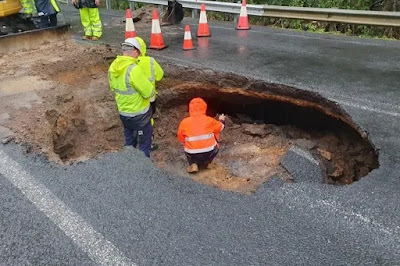This most disaster-prone council in NSW, recently elected in September, says it has run out of available cash and cannot afford for another calamity to strike as it pushes to increase rates for home owners by up to 12 per cent.
The NSW government has issued 85 natural disaster declarations since 2019-20. These allow councils to seek emergency state funding for repairs but Shoalhaven council chief executive said the council also had to chip in about $600,000 each time.
“If [another] natural disaster were to occur, council would not have the available cash to respond,” she said in her report to councillors before last week’s meeting, noting cash reserves had fallen from $19 million five years ago to zero in June.
The Shoalhaven council had lost almost $15 million to disasters since 2019, including through subsidies and fee waivers related to the pandemic, and faced a budget black hole of up to $35 million that could only be addressed through a special rate variation.
Last week, councillors put the option of an 8 or 12 per cent rate rise to the community for feedback.
The previous council refused to support a staff push for a 32 per cent rate rise in January that would have restored the council’s finances.
Source: Sydney Morning Herald.
At an extraordinary council meeting last week, the new deputy mayor said a report outlining Shoalhaven council’s dire financial position had “put a gun to the head of this current council” when it came to a rate increase.
Regional councils have borne the brunt of natural disasters such as bushfires, storms and floods over the past five financial years, figures show, with Shoalhaven and neighbouring Wingecarribee Shire recording 14 disasters each, on top of the pandemic – more than any other council in the state.
Regional councils have borne the brunt of natural disasters such as bushfires, storms and floods over the past five financial years, figures show, with Shoalhaven and neighbouring Wingecarribee Shire recording 14 disasters each, on top of the pandemic – more than any other council in the state.
The disasters have wreaked havoc with council assets, especially roads, and have put significant pressure on a sector advocates say is already struggling thanks in part to cost-shifting from state and federal government and restrictions on rate increases.
The emergencies that hit the Shoalhaven include the Black Summer bushfires that burnt almost 70 per cent of the area, and more than a dozen storms that washed away roads and caused landslides.
The most recent disaster was a severe storm with torrential rain in June, which caused a giant pothole to appear in a major arterial route near Jervis Bay, disrupting travel for thousands of people. It took months to repair.
The emergencies that hit the Shoalhaven include the Black Summer bushfires that burnt almost 70 per cent of the area, and more than a dozen storms that washed away roads and caused landslides.
The most recent disaster was a severe storm with torrential rain in June, which caused a giant pothole to appear in a major arterial route near Jervis Bay, disrupting travel for thousands of people. It took months to repair.
The NSW government has issued 85 natural disaster declarations since 2019-20. These allow councils to seek emergency state funding for repairs but Shoalhaven council chief executive said the council also had to chip in about $600,000 each time.
“If [another] natural disaster were to occur, council would not have the available cash to respond,” she said in her report to councillors before last week’s meeting, noting cash reserves had fallen from $19 million five years ago to zero in June.
The Shoalhaven council had lost almost $15 million to disasters since 2019, including through subsidies and fee waivers related to the pandemic, and faced a budget black hole of up to $35 million that could only be addressed through a special rate variation.
Last week, councillors put the option of an 8 or 12 per cent rate rise to the community for feedback.
The previous council refused to support a staff push for a 32 per cent rate rise in January that would have restored the council’s finances.
Shoalhaven had the eighth-worst financial performance in the state in 2022-23, according to figures from the Office of Local Government, recording a net operating deficit of more than $18 million.
I calculated what a 12% rate increase would mean for us.
Over the year it would be less than the cost of a new tyre and wheel damaged by the appalling condition of our potholed rural roads.
But obviously many residents are already struggling with the cost of living crisis and don’t need added financial stress.
I calculated what a 12% rate increase would mean for us.
Over the year it would be less than the cost of a new tyre and wheel damaged by the appalling condition of our potholed rural roads.
But obviously many residents are already struggling with the cost of living crisis and don’t need added financial stress.
Source: Sydney Morning Herald.























No comments:
Post a Comment